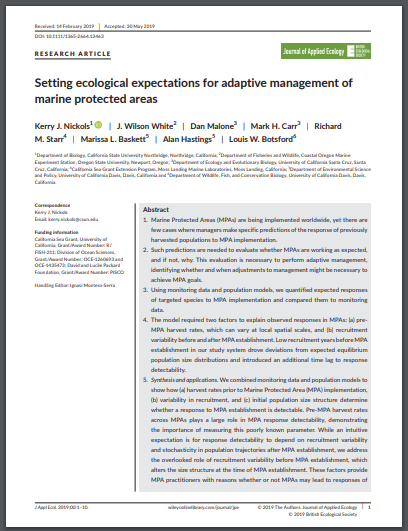
Marine Protected Areas (MPAs) are being implemented worldwide, yet there are few cases where managers make specific predictions of the response of previously harvested populations to MPA implementation. Such predictions are needed to evaluate whether MPAs are working as expected, and if not, why. This evaluation is necessary to perform adaptive management, identifying whether and when adjustments to management might be necessary to achieve MPA goals. Using monitoring data and population models, we quantified expected responses of targeted species to MPA implementation and compared them to monitoring data. The model required two factors to explain observed responses in MPAs: (a) pre‐ MPA harvest rates, which can vary at local spatial scales, and (b) recruitment variability before and after MPAestablishment. Low recruitment years before MPA establishment in our study system drove deviations from expected equilibrium population size distributions and introduced an additional time lag to response detectability. Synthesis and applications. We combined monitoring data and population models to show how (a) harvest rates prior to Marine Protected Area (MPA) implementation, (b) variability in recruitment, and (c) initial population size structure determine whether a response to MPA establishment is detectable. Pre‐MPA harvest rates across MPAs plays a large role in MPA response detectability, demonstrating the importance of measuring this poorly known parameter.












